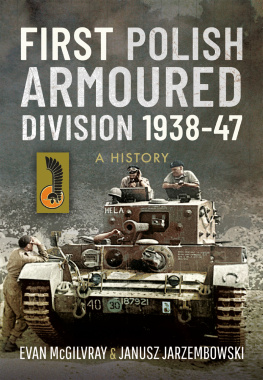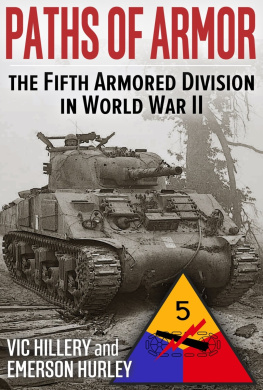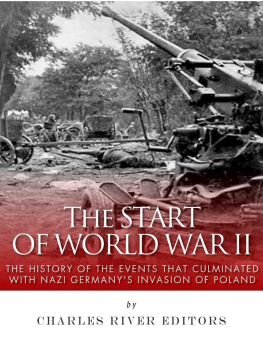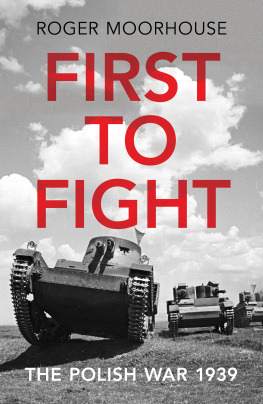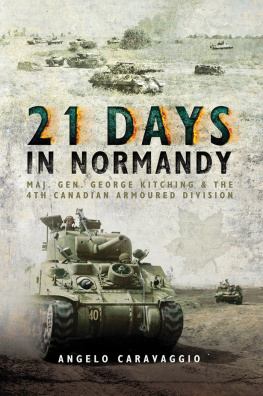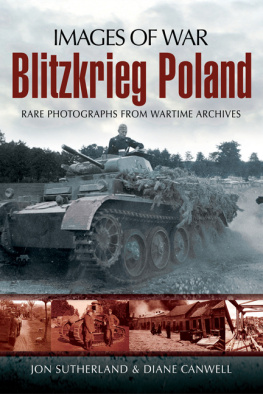Pagebreaks of the print version

First Polish Armoured
Division, 193847
Front cover photo:
General Maczek is seen on the right in the turret of his Cromwell command tank, possibly during the Normandy campaign, northern France, September 1944. Adjacent to him is Captain Kamil Czarnecki, Operating Officer, Headquarters. The rolled sleeves and lack of battledress blouses worn by the crew suggest the hot weather that was experienced during the campaign. Acting as a command tank, the Cromwell has had its main gun removed and replaced by a dummy barrel, plus extra radios have been fitted which enabled the general to maintain contact with both forward units and the rear main headquarters. The name Hela can be seen, allegedly attributed to a crewmans girlfriend. Note some stencilled instructions regarding vehicle maintenance above the gun barrel and adjacent to the hull machine gun. Markings on the hull front indicate from left to right: 40 Divisional Headquarters; 30 bridge tonnage classification; tank serial number; and the divisional formation badge. A horseshoe is attached to the right-side mudguard, perhaps for luck!
The divisional patch was created in February 1942 and was designed by Captain Stanisaw Glaser, 10th Dragoons Regiment, following a competition. The design featured a Polish Hussars feathered eagles wing protruding from a knights helmet, surrounded by an orange circle which was the traditional colour of the armoured units insignia pre-war. It was nicknamed the Squirrel due to its similarities to the animal. ( Public domain )
Back cover:
Quesnay Woods, Normandy, France, August 1944. Polish soldiers, probably from the 10th Mounted Rifles Regiment, inspect a knocked-out German Panzerkampfwagen VI Tiger tank. Pulled alongside the Tiger is a Crusader Mk III/II anti-aircraft tank. ( Antoni Polozynski )
First Polish Armoured
Division, 193847
A History
Evan McGilvray and Janusz Jarzembowski
First published in Great Britain in 2022 by
Pen & Sword Military
An imprint of
Pen & Sword Books Ltd
Yorkshire Philadelphia
Copyright Evan McGilvray and Janusz Jarzembowski 2022
ISBN 978 1 52672 415 1
eISBN 978 1 52672 416 8
Mobi ISBN 978 1 52672 416 8
The right of Evan McGilvray and Janusz Jarzembowski to be identified as Authors of this work has been asserted by them in accordance with the Copyright, Designs and Patents Act 1988.
A CIP catalogue record for this book is available from the British Library.
All rights reserved. No part of this book may be reproduced or transmitted in any form or by any means, electronic or mechanical including photocopying, recording or by any information storage and retrieval system, without permission from the Publisher in writing.
Pen & Sword Books Limited incorporates the imprints of Atlas, Archaeology, Aviation, Discovery, Family History, Fiction, History, Maritime, Military, Military Classics, Politics, Select, Transport, True Crime, Air World, Frontline Publishing, Leo Cooper, Remember When, Seaforth Publishing, The Praetorian Press, Wharncliffe Local History, Wharncliffe Transport, Wharncliffe True Crime and White Owl.
For a complete list of Pen & Sword titles please contact
PEN & SWORD BOOKS LIMITED
47 Church Street, Barnsley, South Yorkshire, S70 2AS, England
E-mail:
Website: www.pen-and-sword.co.uk
Or
PEN AND SWORD BOOKS
1950 Lawrence Rd, Havertown, PA 19083, USA
E-mail:
Website: www.penandswordbooks.com
The authors would like to dedicate this work to the memory of David T. Bradley, a great friend and colleague in the pursuit of knowledge.
List of Colour Plates
Black Devils 24th Lancers Regiment, 10th Armoured Cavalry Brigade, 1938. A modern reconstruction of a lieutenant from the brigade. Formed in 1937, the brigade consisted of two regiments of motorized cavalry the 10th Mounted Regiment and the 24th Lancers and was one of two armoured formations to exist at this time. This uniform was worn from October 1938 and consisted of a black leather jacket, black beret and included a German 1916 steel helmet. Also worn were gauntlets, cavalry boots with spurs, a Ruby pistol and a set of Kolberg binoculars. This appearance earned them their nickname of the Black Devils and Black Brigade. ( Marta Halama-Stozek )
). Introduced in 1940, this example was manufactured in Canada in 1941.These soldiers are wearing the summer-issue British denim blouse and trousers and are equipped with Lee-Enfield rifles and Sten submachine guns. ( Photos from 136 to 147 are from the Odwach Association with photographic copyright belonging to Jaroslaw Koperski )
Bren-gunner, 10th Dragoons Regiment, 10th Armoured Brigade, Normandy, August 1944. This soldier is also wearing the British denim blouse and trousers, plus 37 pattern webbing (British 1937 Pattern webbing equipment) including ammunition pouches, worn without any insignia, which was common practice. He carries a Canadian-manufactured Bren Light Machine Gun (LMG) Mk II and has a Polish Eagle painted on his helmet. ( Jacek Rutkowski )
Polish soldier of the First Polish Armoured Division. A soldier on non-active duty wears a British-issue beret, a collarless shirt, battledress serge trousers, web anklets and ammunition boots. He is seen holding an army-issue thermos flask in the process of preparing food in a rear area. ( Jacek Rutkowski )
Infantryman, 3rd Rifle Brigade, the Netherlands, autumn 1944. This image represents a typical soldier of the brigade as he would appear on active duty. Over his British Battledress uniform he wears a leather jerkin as additional weather protection, as well as rubber Wellington boots instead of ammunition boots due to the boggy ground experienced in the Netherlands. He carries a Lee-Enfield No. 4 Mk 1 rifle, plus ammunition pouches attached to the 37 pattern webbing with an army-issue barbed-wire cutter attached. Note the divisional insignia, left sleeve only, and Poland shoulder title sewn on both sleeves. The British RAC (Royal Armoured Corps) helmet has the Polish Eagle stencilled on the front. ( Jacek Rutkowski )
Infantryman, 3rd Rifle Brigade, the Netherlands, November 1944. The brigade consisted of the 1st Infantry Battalion (Highland), 8th Rifle Battalion and 9th Rifle Battalion plus the 1st Independent Heavy Machine-Gun Squadron. This soldier is typical of one of these units at the time and is dressed in full battle order. His uniform varies little from the previous photograph, although some additions are included. The helmet is the standard-issue British Mark II Brodie steel version. A kit bag is worn on his back containing personal equipment with attached gas-mask canvas bag and a rolled anti-gas oilskin cape. This was worn over the soldiers uniform and kit, which featured sleeves, in the event of a gas attack. Note the German infantry shovel attached to his belt and a bayonet fixed to his Lee-Enfield rifle. ( Jacek Rutkowski )
Infantryman, 3rd Rifle Brigade, the Netherlands, November 1944. A frontal view of the soldier as seen in the previous photo. Also worn are rubber Wellington boots as previously mentioned in photo 139. ( Jacek Rutkowski )
Tank crewman, North-West Europe, winter 1944/45. This tank crewman is seen wearing the British-issue 1943 tankers oversuit issued to troops manning armoured vehicles. It was worn over the normal uniform and provided a warm and practical piece of kit. The rest of the uniform consists of a black beret with Polish Eagle badge, goggles, leather gauntlets, 37 pattern webbing belt which has attached a holster with a .38 Webley Mk IV revolver, ammunition boots and binoculars. No other insignia is worn on the suit. ( Jacek Rutkowski )

